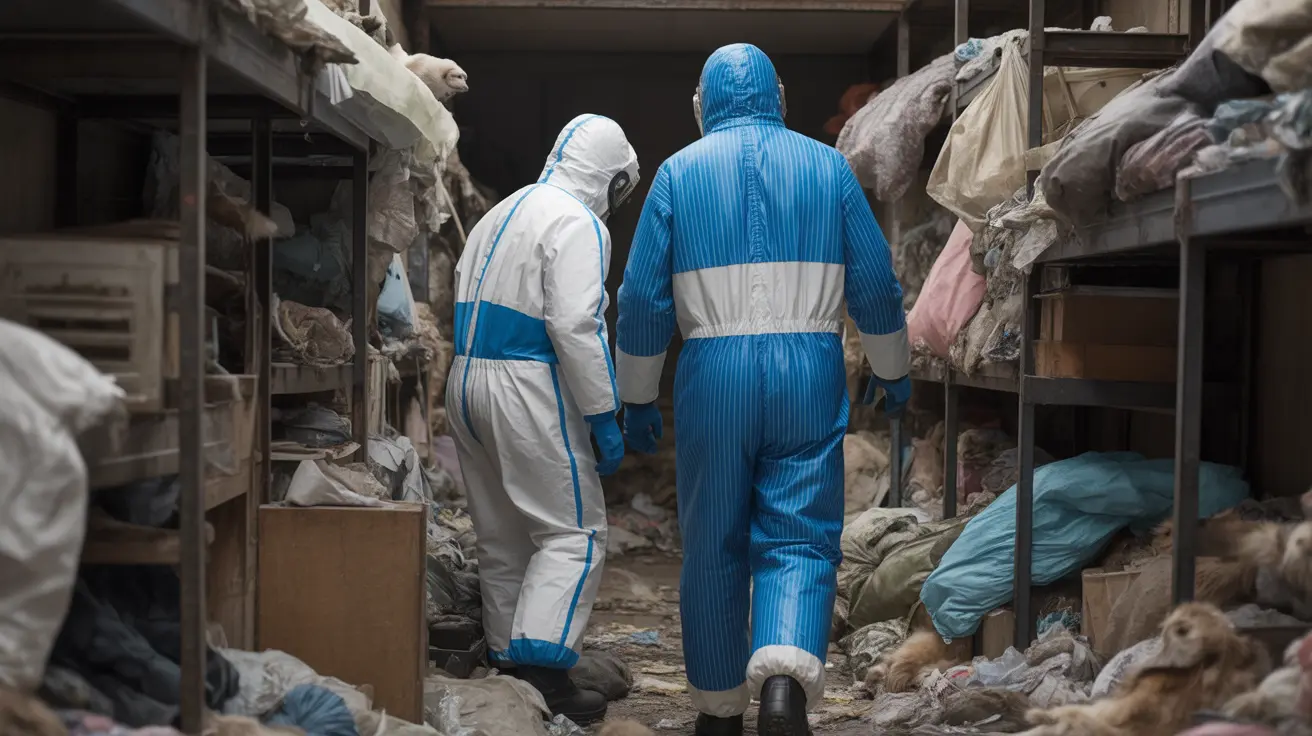Details of the Emergency Rescue Operation
The rescue workers faced significant challenges navigating through the cluttered space, with footage showing SDHS personnel carefully making their way through narrow pathways between piled-up furniture and debris. The dangerous conditions required methodical searching to ensure no animals were overlooked in the maze-like environment.
Health Conditions of Rescued Animals
The recovered pets showed clear signs of neglect, suffering from:
- Severe flea infestations
- Various skin conditions
- Effects of prolonged confinement
All 13 animals were immediately transported to SDHS's Oceanside campus, where they were placed under Emergency Boarding Status for evaluation and treatment.
Understanding Animal Hoarding Signs
This incident highlights the importance of recognizing potential animal hoarding situations in our communities. While this article focuses on the rescue operation, it's crucial to understand that animal hoarding often indicates deeper issues requiring both enforcement and support.
Warning Signs to Watch For
Common indicators of animal hoarding include:
- Unusual numbers of pets in a single residence
- Property deterioration
- Strong animal-related odors
- Minimal social interaction from residents
- Apparent neglect of property maintenance
Emergency Pet Boarding and Next Steps
The San Diego Humane Society has placed all rescued animals under professional care while the investigation continues. The facility remains vigilant, monitoring the apartment to ensure no additional pets remain trapped inside.
Response Protocol
SDHS's systematic approach includes:
- Immediate medical evaluation
- Treatment for urgent health issues
- Safe, clean temporary housing
- Ongoing monitoring and care
- Legal documentation of the case
Frequently Asked Questions
How did the San Diego Humane Society rescue 13 abandoned pets from a trash-filled apartment?
The rescue was conducted over four days by SDHS's Humane Law Enforcement team after receiving a landlord's report. Officers carefully navigated through accumulated debris to locate and extract 11 dogs and two cats from the hoarding conditions.
What health issues did the rescued dogs and cats suffer from after living in hoarding conditions?
The animals were found with flea infestations and various skin issues resulting from their living conditions. They are currently receiving treatment at SDHS's Oceanside campus under Emergency Boarding Status.
What signs should I look for to identify potential animal hoarding or neglect in my neighborhood?
Key indicators include properties with unusually high numbers of pets, deteriorating living conditions, strong animal-related odors, and social isolation of the residents. If you suspect animal hoarding, contact your local humane society or animal control.
Supporting Animal Welfare
This rescue operation underscores the vital work performed by animal welfare organizations like the San Diego Humane Society. While this case remains under investigation, it serves as a reminder of the importance of community vigilance and prompt reporting of suspected animal neglect.
The rescued animals are now receiving the care they desperately needed, marking the beginning of their journey toward recovery and, hopefully, placement in loving forever homes. SDHS continues to monitor the situation while providing these animals with professional care and attention.






